Although the arculee tends to take the spotlight in our portfolio, arculus is as much a software company as a robotics one. With a universal solution, offering a fleet manager and a warehouse administration system, this article will shine some light on the hard work carried out by our programmers in the software team. From simple direction control to large-scale goods-to-person delivery: here is everything you need to know about the arculus software ecosystem.
Let’s cover the basics
Software, a word that is so ingrained in the modern world that its meaning feels somewhat forgotten. In the most basic terms, it’s a set of instructions, data or programs used to operate computers and execute specific tasks. In other words, software tells a computer how to function.
For the context of arculus, however, the definition is a bit more complex. Martin Krzykawski (Software Developer) explains that “We have a system consisting of two types of subsystems: ‘controllers’ (the arculus software) and ‘agents’ (robots). Both of them have their own computer”. Each computer runs its own instructions to generate or process “jobs”, and they exchange job information via a “communication protocol”.
“When we tell a robot what to do, we call it a job. And that job has different actions, like drive here, put your lift up, or get somewhere else.”
Michael Nix (Team Lead Software Warehouse).
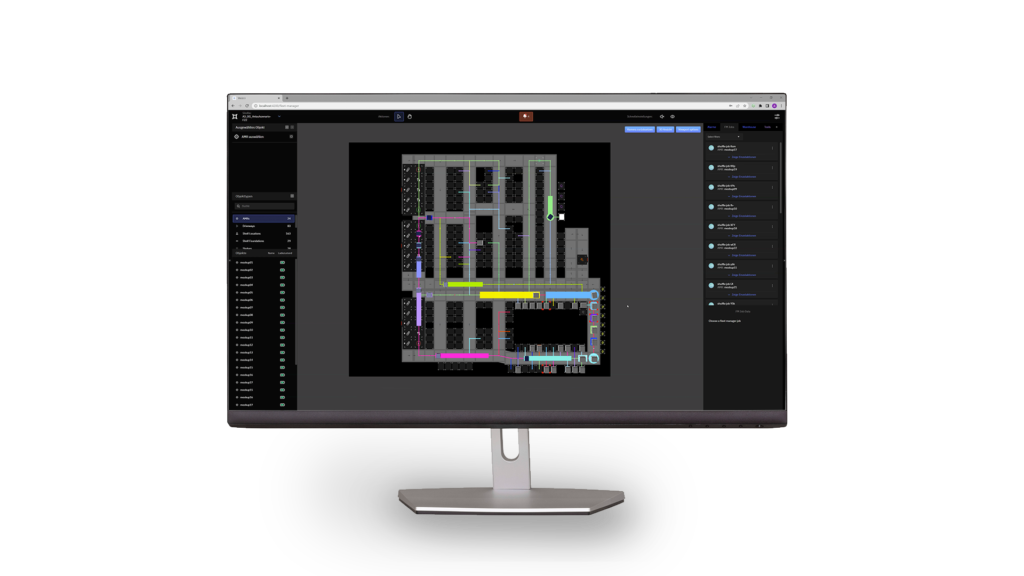
But for Martin, there is also a slightly more literal approach to the term. He describes that “software is called software because it’s so soft, meaning that you can shape it the way you want to, as long as you do it the correct way”. Along these lines, the arculus software presents itself in two different “shapes” according to specific needs. Namely: Fleet Management and Warehouse Management.
Fleet Management
The arculus fleet management solution is an intelligent traffic control system that directs the movement of materials. In layperson’s terms, the software works like a navigation app – providing smart traffic management to power and control robots that move products and materials in a production facility.
But when looking at the importance of a fleet manager, one question comes to mind: if the fleet of robots is self-driving and intelligent, why does it need to be controlled by external software? Michael Nix explains that although the robots can drive around using sensors and/or markers on the ground, without the software, they “have no idea what to do or even that there are things to do”.
“The fleet manager is the part of the system that tells the robots where to go, in the sense that it gives them a route. It tells them for example, to drive along these points, drive this speed between these two points, or drive the curve there if you can.”
Michael Nix
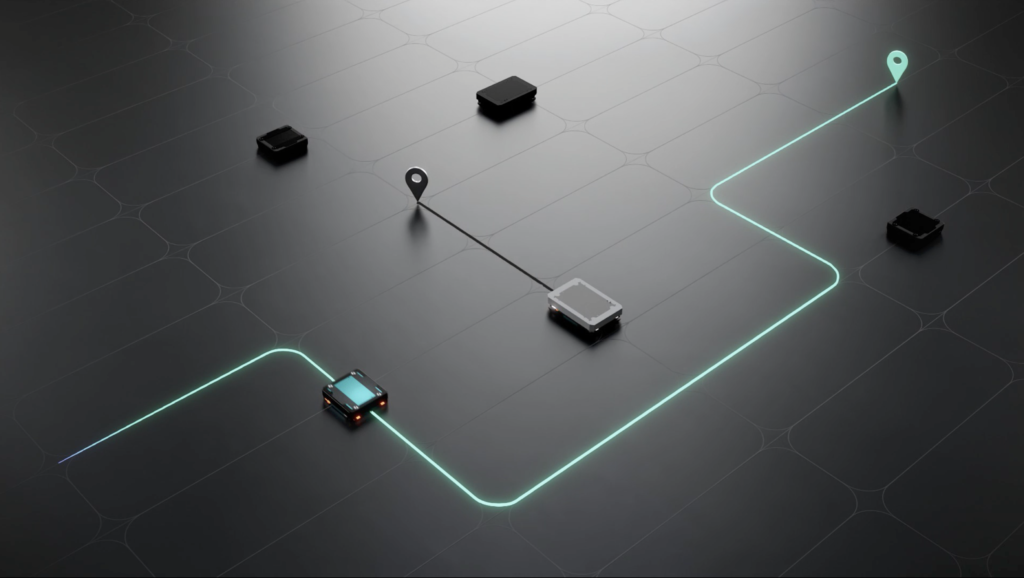
Looking back at the navigation app analogy, the routing mechanism of the fleet manager also needs a sort of map to calculate the best driving course. For that, the system needs information about the facility, like “where streets are, where intersections are, and which direction along the street robots are allowed to drive”, explains Nix. With this knowledge, the fleet manager is then able to locate an available AMR (Autonomous Mobile Robot) to drive along the necessary path.
Warehouse Management – or “goods-to-person”
Martin Krzykawski describes the arculus warehouse solution, as a layer of software added on top of the fleet manager. “The fleet manager chooses a robot and tells it where to go and what to do there (usually transport something from A to B), whereas the warehouse manager finds out what tasks must be done in the first place.”
In other words, all the Fleet Manager does is follow routing orders from the higher logic while handling the speed, space allocation and dynamic rerouting of the AMRs if necessary. That means that in a real-life operation, it is the Warehouse Management System that coordinates the transport of parts, in perfect sync with the whole operation.
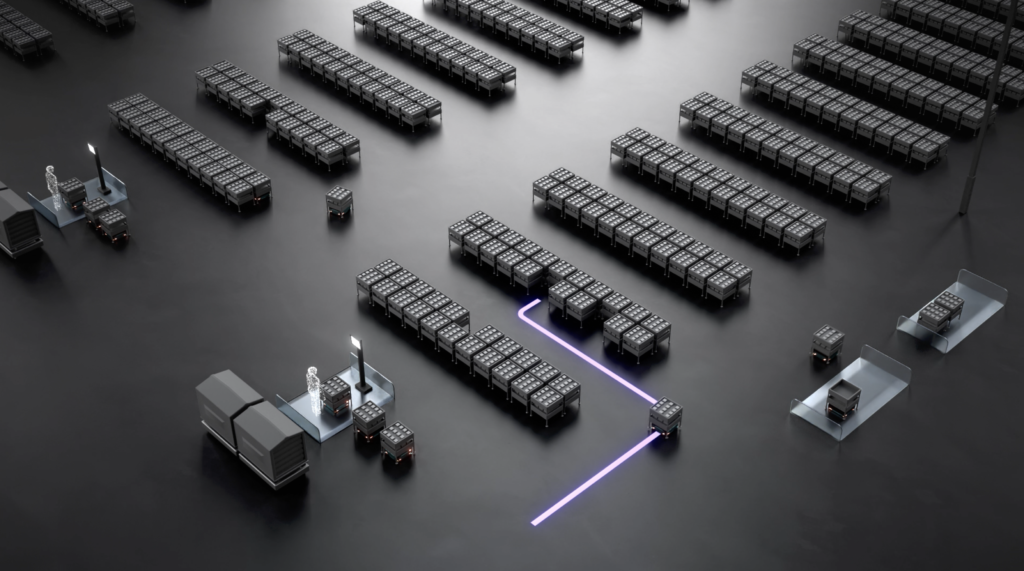
The innovative element here is the possibility to eliminate the large distances covered by workers when picking and transporting items inside the production facility. With the warehouse software, AMRs can transport goods directly to the employees at the right time and order. The result is an increase in productivity, accuracy, and space optimisation.
How it all works in real life
Before we go into the details of how the software actually works, let’s quickly recap on the uses of the different modules:
Warehouse management software ensures that the materials we need are where we need them at the right time. Fleet management software works out where, when and how to move products and materials.
The combination of both solutions is what constitutes the arculus software ecosystem. This software serves as a single controlling instance for a fleet of AMRs running at any production facility. For that, customers can work with implementation in three steps:
- Create a digital map of the production facility layout;
- Use simulation mode to test the developed system for feasibility and performance before the solution goes live;
- Go live: a real-time overview of the fleet, which now moves in a coordinated dance around the facility.
The Real Action
Of course, customers don’t need to work with all two solutions offered by the software – the arculus team works closely with clients to understand their needs and expectations in order to define the best use case. For Michael Nix, that’s what differentiates the arculus software solutions from other similar products in the market. “We don’t just offer the software for customers to download and install themselves. We have experience integrating custom higher logic and adapting our fleet manager to the needs of our customers.”, he explains.
This flexibility comes from the early days of arculus as a company: the partnership with Audi. One of the projects developed in collaboration with the company was the so-called Supermarket 2.0 – one of the first implementations of the goods-to-person sequencing principle in a manufacturing facility.
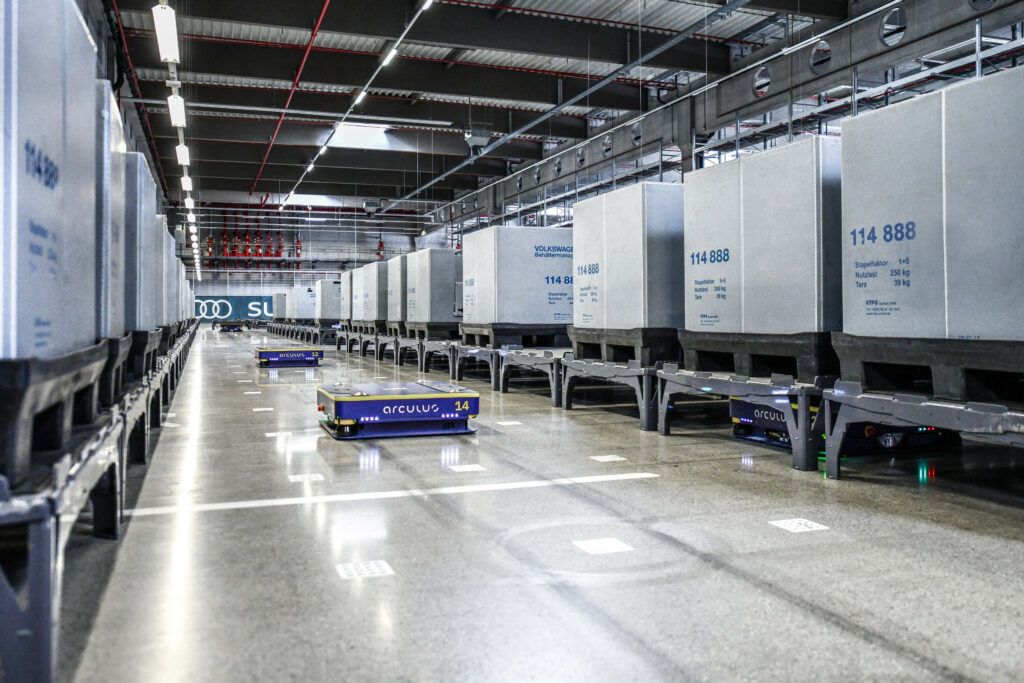
As arculus solutions were then still new, the cooperation with Audi allowed for the joint development of the arculus software ecosystem. “Normally, you would have to imagine what future customers might need from you while developing your software. Working with Audi gave us the opportunity to battle-test our solution within the real world from the start and evolve it alongside their needs”, explains Michael. For that, developers had to build a solution with flexibility at its heart – which is precisely what now allows for higher customisation possibilities than other solutions in the market.
Recognition
One of the proudest moments for our software developers came in 2021 when arculus won the IFOY award in the category of Intralogistics Software.
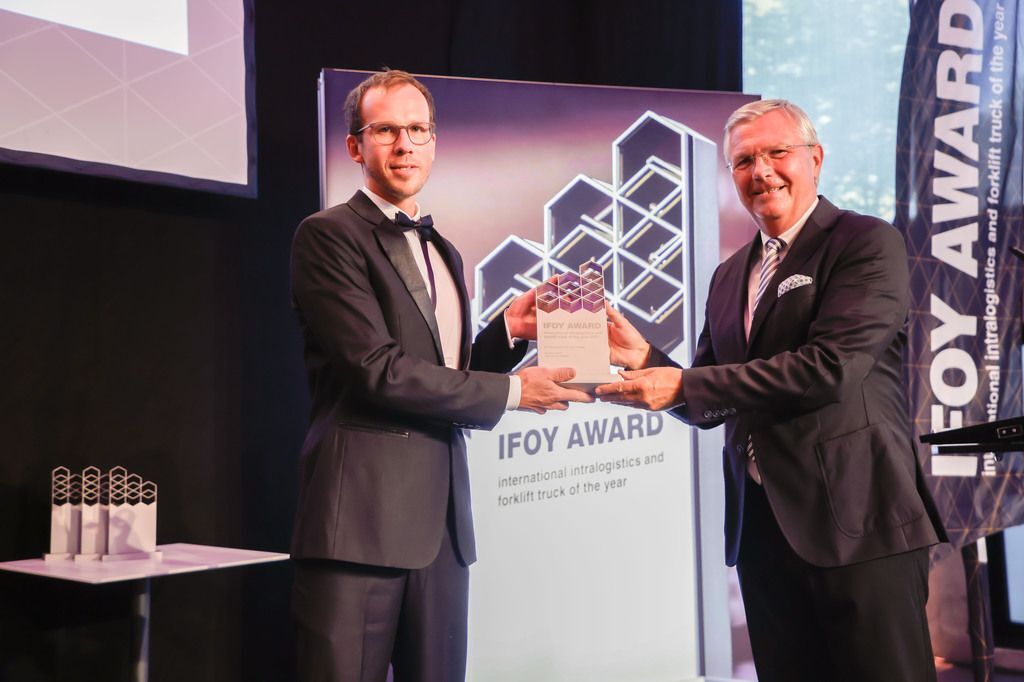
According to the IFOY test verdict:
“The use of a standardised interface, opens up possibilities for the mixed operation of automated warehouse vehicles that were unthinkable in practice until recently. The fact that arculus Fleet is brand-independent facilitates the selection of the most suitable AGV for a specific transport requirement. Since the system takes into account the current traffic situation on-site for dynamic routings, even higher efficiency and availability is possible.”